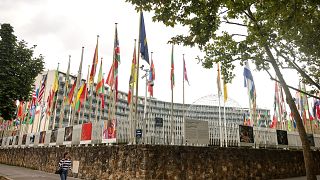UNESCO
UNESCO has inscribed 26 new locations onto its list of World Heritage sites. They include ancient ruins in Turkey to wildlife havens in Sierra Leone.
In Turkey, the site to get on the list this year is Sardis and the Lydian Tumuli of Bin Tepe. It is the ruins of a powerful Iron Age civilisation and includes the settlement, cemetery and temples the people built at that time.
In South Africa, iSimangaliso Wetland Park was inscribed in 1999, but its boundary has now been extended into Mozambique to include Maputo National Park. The area is home to lagoons, mangroves and coral reefs.
Another African wildlife haven to make the list is the Gola-Tiwai Complex in Sierra Leone. It is home to more than 1,000 plant species, 55 mammals and up to 448 bird species.
In Guinea-Bissau, it is the Coastal and Marine Ecosystems of the Bijagós Archipelago that have been chosen for their rich diversity of wildlife, including many bird colonies. And in Malawi and Cameroon, the two cultural landscapes of Mount Mulanje and Diy-Gid-Biy in the Mandara Mountains were selected for the list.
The Peruaçu River Canyon in Brazil earned a place on UNESCO's list. The landscape includes a vast cave system and supports 2,000 plant and animal species.
In Australia, the ancient rocks of the Murujuga Cultural Landscape are now officially World Heritage. They hold profound cultural and spiritual significance for the Ngarda-Ngarli people, the traditional Indigenous custodians of the site.
UNESCO also inscribed a number of sites across Asia.












02:19
Milan exhibition highlights 3,000 years of Olympic history
01:00
London's iconic landmarks recreated in gingerbread at charity exhibition
02:19
Timbuktu's ancient manuscripts return home but security threats remain
Go to video
Nigeria dumps mother-tongue education - just as Ghana embraces it. Who’s it right?
00:59
UNESCO General Conference elects Egypt's El-Enany as Director-General
01:45
Morocco’s caftan: A cultural jewel on the path to UNESCO recognition